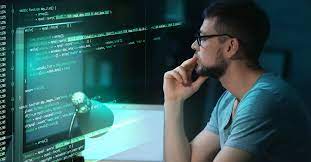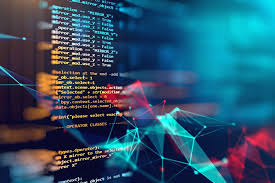The World of Software Development
The World of Software Development
Software development is a dynamic and ever-evolving field that plays a crucial role in shaping the digital landscape of today’s world. From mobile apps to complex enterprise systems, software developers are the architects behind the technology that powers our daily lives.
The Process of Software Development
Software development involves a series of steps that begin with understanding the requirements and end with deploying the final product. This process typically includes:
- Requirement Analysis: Developers work closely with stakeholders to gather and analyze requirements for the software.
- Design: Based on the requirements, developers create a detailed design plan for the software architecture.
- Implementation: This is where developers write the actual code that brings the design to life.
- Testing: Quality assurance teams test the software to identify and fix any bugs or issues.
- Deployment: The final product is deployed to production environments for users to access.
- Maintenance: Developers provide ongoing support, updates, and maintenance to ensure the software remains functional and up-to-date.
The Role of Software Developers
Software developers are skilled professionals who use programming languages and tools to create software solutions. They are responsible for writing clean, efficient code, testing their work, and collaborating with other team members throughout the development process. Some common roles in software development include:
- Front-end Developer: Focuses on creating user interfaces and experiences using technologies like HTML, CSS, and JavaScript.
- Back-end Developer: Works on server-side logic, databases, and APIs to ensure data is securely stored and accessed by users.
- Full-stack Developer: Has expertise in both front-end and back-end technologies, enabling them to work on all aspects of a software project.
- Mobile Developer: Specializes in creating applications for mobile devices using platforms like iOS or Android.
The Future of Software Development
In an era where technology continues to advance at a rapid pace, the future of software development looks promising. Emerging technologies such as artificial intelligence, blockchain, and Internet of Things (IoT) are reshaping how software is created and utilized. As demand for innovative digital solutions grows, so does the need for skilled software developers who can adapt to new challenges and opportunities in this exciting field.
9 Advantages of Software Development: Boosting Efficiency, Collaboration, and Innovation
- 1. Enables automation of repetitive tasks, increasing efficiency.
- 2. Facilitates collaboration among team members working on a project.
- 3. Provides opportunities for creativity and innovation in problem-solving.
- 4. Allows for scalability, making it easier to expand or modify software as needed.
- 5. Enhances user experience through intuitive interfaces and seamless functionality.
- 6. Supports data-driven decision-making by providing valuable insights through analytics.
- 7. Promotes continuous learning and skill development due to the ever-evolving nature of technology.
- 8. Increases competitiveness by enabling businesses to offer cutting-edge digital solutions.
- 9. Contributes to economic growth by driving technological advancements and job creation.
Understanding the Challenges of Software Development: Complexity, Time, Cost, Maintenance, Compatibility, and Security Risks
- 1. Complexity
- 2. Time-consuming
- 3. Costly
- 4. Maintenance challenges
- 5. Compatibility issues
- 6. Security risks
1. Enables automation of repetitive tasks, increasing efficiency.
Software development enables the automation of repetitive tasks, significantly boosting efficiency within various industries. By creating custom software solutions tailored to specific business needs, organizations can streamline processes, reduce manual errors, and save valuable time and resources. Automation not only increases productivity but also allows employees to focus on more strategic and creative tasks, ultimately driving innovation and growth within the organization.
2. Facilitates collaboration among team members working on a project.
Software development facilitates collaboration among team members working on a project by providing a centralized platform where individuals can share code, communicate effectively, and coordinate their efforts seamlessly. Through version control systems like Git and collaboration tools such as project management software, team members can work together in real-time, track changes, resolve conflicts, and ensure that everyone is aligned towards the project goals. This collaborative environment promotes transparency, efficiency, and teamwork, ultimately leading to the successful delivery of high-quality software solutions.
3. Provides opportunities for creativity and innovation in problem-solving.
Software development provides ample opportunities for creativity and innovation in problem-solving. Developers are constantly challenged to think outside the box and come up with unique solutions to complex problems. Whether it’s designing a user-friendly interface, optimizing code for efficiency, or implementing cutting-edge technologies, software developers have the freedom to explore creative solutions that push the boundaries of what is possible. This aspect of software development not only keeps the field exciting and engaging but also fosters a culture of continuous learning and growth among professionals in the industry.
4. Allows for scalability, making it easier to expand or modify software as needed.
Software development offers the significant advantage of scalability, allowing for seamless expansion or modification of software as required. This flexibility enables businesses to adapt to changing needs, accommodate growth, and enhance functionality without starting from scratch. By designing software with scalability in mind, developers can efficiently adjust the system to meet evolving requirements, ensuring that it remains robust and adaptable in the face of dynamic business environments.
5. Enhances user experience through intuitive interfaces and seamless functionality.
Software development excels in enhancing user experience through intuitive interfaces and seamless functionality. By prioritizing user-centric design and smooth functionality, software developers create applications and systems that are not only visually appealing but also easy to navigate and use. Intuitive interfaces ensure that users can interact with the software effortlessly, leading to a more satisfying and efficient experience. This focus on enhancing user experience ultimately results in increased user satisfaction, improved productivity, and higher engagement with the software product.
6. Supports data-driven decision-making by providing valuable insights through analytics.
Software development supports data-driven decision-making by providing valuable insights through analytics. By leveraging data analytics tools and techniques, software applications can process and analyze large volumes of data to extract meaningful patterns and trends. This enables businesses to make informed decisions based on real-time information, leading to improved efficiency, productivity, and strategic planning. Data-driven decision-making empowers organizations to stay competitive in today’s fast-paced digital landscape by harnessing the power of data to drive innovation and growth.
Software development promotes continuous learning and skill development due to the ever-evolving nature of technology. In this dynamic field, developers are constantly exposed to new tools, languages, and frameworks, requiring them to stay updated with the latest trends and advancements. This culture of continuous learning not only keeps developers engaged and motivated but also ensures that they are equipped to tackle new challenges and innovate effectively. By embracing lifelong learning, software developers can enhance their expertise and adaptability, ultimately driving progress and innovation in the tech industry.
8. Increases competitiveness by enabling businesses to offer cutting-edge digital solutions.
Software development increases competitiveness by enabling businesses to offer cutting-edge digital solutions that cater to the evolving needs of customers in today’s fast-paced market. By leveraging innovative software technologies, businesses can differentiate themselves from competitors, enhance customer experiences, and stay ahead of industry trends. This proactive approach not only attracts new customers but also fosters loyalty among existing ones, positioning the business as a leader in its field. Ultimately, embracing software development as a strategic asset empowers businesses to adapt, grow, and thrive in a highly competitive business environment.
9. Contributes to economic growth by driving technological advancements and job creation.
Software development plays a vital role in contributing to economic growth by driving technological advancements and job creation. As software solutions become more integral to various industries, the demand for skilled developers continues to rise, leading to job opportunities and career growth. Additionally, the innovative technologies developed through software development not only improve efficiency and productivity but also open up new markets and drive overall economic progress. By fostering a culture of innovation and entrepreneurship, software development fuels economic growth by creating new opportunities for businesses and individuals alike.
1. Complexity
Software development poses a significant challenge in terms of complexity, often demanding intricate coding and advanced problem-solving skills. Developers must navigate through intricate algorithms, data structures, and design patterns to create robust and efficient software solutions. The complexity of software development can lead to time-consuming debugging processes and the need for continuous learning to keep up with evolving technologies. This con highlights the demanding nature of the field, requiring developers to constantly refine their skills and strategies to overcome complex challenges in the development process.
2. Time-consuming
One significant drawback of software development is its time-consuming nature. The process of designing, implementing, testing, and deploying software can be a lengthy and intricate endeavor. Developers need to carefully plan and execute each stage of the development lifecycle, which requires time and effort to ensure that the final product meets quality standards and fulfills the requirements of stakeholders. Delays in any phase of the development process can impact project timelines and potentially result in extended delivery schedules, making time management a critical challenge in software development projects.
3. Costly
Developing custom software solutions can be a costly endeavor, primarily because of the requirement for highly skilled developers and substantial resources. The expenses associated with hiring experienced professionals, investing in advanced technologies, and ensuring quality assurance throughout the development process can significantly impact the overall budget of a software project. As a result, organizations need to carefully weigh the benefits against the costs when opting for custom software development to ensure that they are making a sound investment in meeting their specific business needs.
4. Maintenance challenges
One significant con of software development is the maintenance challenges it presents. Software, once developed and deployed, demands ongoing updates and maintenance to uphold its functionality and security. This continuous need for monitoring, bug fixes, and enhancements can be time-consuming and resource-intensive for development teams. Failure to address maintenance issues promptly can lead to vulnerabilities, system failures, and potential security breaches, highlighting the critical importance of dedicating resources to the upkeep of software systems.
5. Compatibility issues
Compatibility issues pose a significant con in software development as ensuring that software functions seamlessly across various platforms and devices can be a daunting task. Different operating systems, hardware configurations, and screen sizes introduce complexities that developers must address to deliver a consistent user experience. Resolving compatibility issues requires thorough testing, optimization, and sometimes compromises in functionality to accommodate the diverse ecosystem of technology devices and environments. Failure to address compatibility concerns can lead to user frustration, decreased usability, and ultimately hinder the success of the software product.
6. Security risks
Security risks are a significant con of software development. Developing secure software is crucial as vulnerabilities can expose sensitive data to cyber threats. Inadequate security measures can lead to data breaches, unauthorized access, and other malicious activities that can have serious consequences for individuals and organizations. It is essential for software developers to prioritize security throughout the development process to protect users’ information and maintain trust in the software they create.











